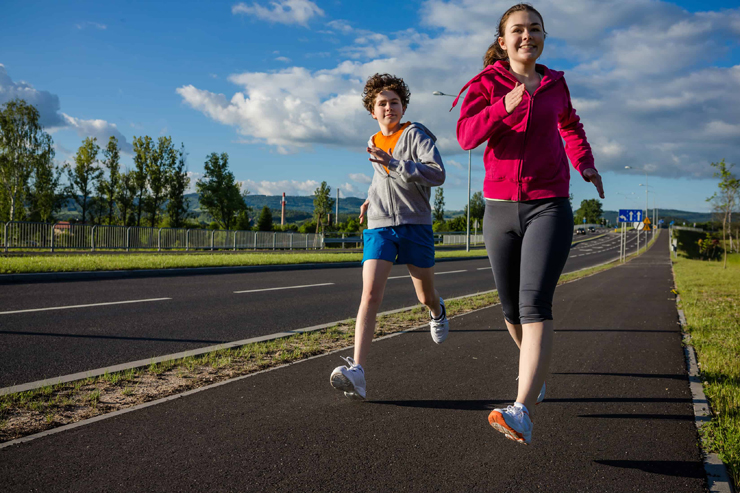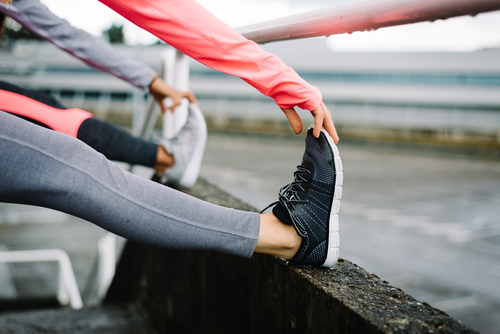The Importance of Warm-ups and Cool-downs
Practice is a fundamental part of keeping up with by and large wellbeing, wellness, and prosperity. Whether you're taking part in extraordinary actual work, strength preparing, or basically captivating in sporting activity, heating up and chilling off are principal parts of a protected and viable exercise routine. However frequently disregarded by both beginner and, surprisingly, experienced competitors, warm-ups and cool-downs assume a basic part in upgrading execution, forestalling wounds, and advancing recuperation.
This complete investigation dives into the significance of warm-ups and cool-downs, their physiological impacts on the body, and the ideal practices for integrating them into your gym routine daily schedule.
What is a Warm-up?
A warm-up is a low-to-direct power action that is performed prior to taking part in more extreme activity. A progressive cycle readies the body for the requests of actual work. The reason for a warm-up is to increment internal heat level, further develop blood stream to muscles, and improve joint versatility. The warm-up additionally assists with actuating muscles and draw in the cardiovascular framework, the two of which are fundamental for better execution during more exhausting activity.
Warm-ups can take various structures, for example,
General Warm-up: This includes exercises that increment by and large internal heat level and pulse. Models incorporate running, cycling, or lively strolling. These exercises connect huge muscle gatherings and jump-start the system to different pieces of the body.
Dynamic Extending: This includes dynamic developments that stretch muscles and joints. Dynamic stretches may incorporate leg swings, arm circles, or hip pivots. In contrast to static extending (where muscles are held in a stretch for broadened periods), dynamic extending is development based and further develops scope of movement.
Sport-Explicit Warm-up: For competitors taking part in unambiguous games, a warm-up might be custom fitted to the developments expected in their game. For instance, b-ball players might perform spilling drills, while football players could run short runs or work on tossing and getting.
The Advantages of Heating Up
The significance of heating up couldn't possibly be more significant. The following are a portion of the key physiological advantages that accompany a legitimate warm-up:
Expanded Blood Stream to Muscles: One of the fundamental advantages of a warm-up is that it builds the progression of oxygenated blood to muscles. This guarantees that muscles are very much energized and ready to perform effectively during more serious actual work. Likewise, warm-ups assist with disseminating supplements to muscles, working with better perseverance and execution.
Further developed Muscle Flexibility: Continuously raising the internal heat level through a warm-up builds the versatility of muscles and ligaments. This is especially significant while setting up the body for exercises that require power, adaptability, or hazardousness. A more adaptable muscle is less inclined to tear or strain during an exercise.
Improved Joint Versatility: Warm-ups assist with greasing up the joints by animating the development of synovial liquid, which is the body's normal ointment. This works on joint adaptability and diminishes the gamble of wounds like injuries, strains, or disengagements.
Raised Pulse: Continuously hoisting the pulse permits the cardiovascular framework to conform to the rising actual requests. This makes the change from resting to working power more reasonable and diminishes the gamble of an unexpected spike in pulse, which could be perilous for people with hidden heart conditions.
Mental Planning: Heating up gives a psychological progress from the burdens of day to day existence to the center expected for an exercise. It permits you to focus your consideration, improve your concentration, and intellectually plan for the difficulties of the activity meeting.
Counteraction of Injury: The essential objective of a warm-up is to lessen the gamble of injury by setting up the body for the power of the exercise. By expanding blood stream to muscles, upgrading adaptability, and working on joint versatility, the gamble of wounds, for example, muscle strains, tendon injuries, or joint wounds is limited.
What is a Cool-down?
A cool-down alludes to the exercises performed after practice that permit the body to continuously change from extreme movement to a resting state. It includes low-power works out, for example, strolling or slow cycling, trailed by static extending to assist with loosening up muscles, lessen firmness, and take the pulse back to its not unexpected levels.
Like warm-ups, cool-downs are frequently ignored, yet they are similarly as significant for recuperation and long haul wellness. A cool-down fills in as a manner to keep the body from unexpectedly stopping actual work, which could make blood pool in the limits and lead to discombobulation, swooning, or muscle cramps.
The Advantages of Chilling Off
The advantages of a legitimate cool-down are vital to a competitor's recuperation interaction and generally wellness progress. The following are a few key benefits:
Steady Pulse Decrease: During serious activity, the pulse spikes. The cool-down process assists the heart with rating bit by bit return to its resting state, forestalling an unexpected drop in circulatory strain that could bring about unsteadiness or discombobulation. This guarantees a more secure re-visitation of gauge conditions for the cardiovascular framework.
Decreased Muscle Irritation: Chilling off lessens muscle touchiness (postponed beginning muscle touchiness, or DOMS) by advancing the evacuation of metabolic side-effects like lactic corrosive, which gather during serious activity. Extending and delicate developments increment blood flow, helping the conveyance of oxygen and supplements to muscles to accelerate recuperation.
Diminished Hazard of Blood Pooling: After enthusiastic activity, blood will in general pool in the lower appendages on the off chance that a cool-down is skipped. This can prompt discombobulation, blacking out, or squeezes. The steady re-visitation of a resting state guarantees that blood dissemination stays typical and forestalls any bad incidental effects related with unexpected discontinuance.
Counteraction of Injury: Chilling off decreases muscle solidness and further develops adaptability by empowering muscles to unwind and protract. This lessens the gamble of muscle strains or joint firmness that can happen assuming the muscles stay tight after work out.
Mental Recuperation: Similarly as warm-ups intellectually set you up for work out, cool-downs give a snapshot of mental recuperation and unwinding. This permits you to consider the exercise, loosen up the brain, and change flawlessly from exercise to other everyday exercises.
Advances Adaptability: A cool-down frequently incorporates static extending works out, which further develop adaptability by stretching muscles and ligaments. This improves the scope of movement and decreases the probability of creating snugness, which can influence stance and execution in later exercises.
Warm-ups and Cool-downs for Various Kinds of Activity
The particular sort of warm-up and chill off you perform can rely upon the sort of activity you are participating in. The following are a few contemplations for various sorts of exercises:
Strength Preparing
Warm-up: A general warm-up that incorporates light cardio (like running or cycling) trailed by unique stretches for the joints and muscles you intend to focus in your solidarity exercise (e.g., arm circles for chest area, leg swings for lower body) is suggested. You can likewise perform warm-up sets with lighter loads to set up the muscles for heavier lifts steadily.
Cool-down: A cool-down for strength preparing ought to incorporate light cardio and static extending to help muscles unwind and protract after constriction. Center around extending the significant muscle bunches that were worked, holding each stretch for 15-30 seconds to advance adaptability.
Cardiovascular Activity (Running, Cycling, and so forth.)
Warm-up: Start with light cardio (e.g., strolling or slow running) to step by step build your pulse. Dynamic stretches, for example, jumps, leg swings, and middle turns can actuate the muscles utilized in your cardio exercise.
Cool-down: Subsequent to finishing a cardio meeting, dial back your speed progressively (e.g., strolling in the wake of hurrying) to take the pulse back to typical levels. Static extending for the legs, hips, and lower back will assist with delivering strain and further develop adaptability.)
Extreme cardio exercise (HIIT)
Warm-up: Since HIIT includes short explosions of extreme activity followed by recuperation periods, heating up is especially vital. Begin with light cardio and dynamic extending, zeroing in on enacting the muscles and joints you intend to draw in during the spans.
Cool-down: After an extreme HIIT meeting, dial back step by step by strolling or running at a decreased speed. Perform static stretches, particularly for the significant muscle bunches like the quadriceps, hamstrings, and calves, to advance unwinding and decrease solidness.
Yoga and Pilates
Warm-up: For yoga or Pilates, heating up frequently includes breathing activities and delicate developments to slacken the muscles and joints. These exercises set up the body and brain for more profound extending and adaptability work.
Cool-down: A cool-down in yoga and Pilates normally includes a progression of profound, static stretches to assist with prolonging muscles and energize unwinding. Breathing activities are likewise generally used to quiet the sensory system.
Commonsense Ways to integrate Warm-ups and Cool-downs into Your Daily practice
Consistency: Integrate warm-ups and cool-downs as a feature of your normal wellness standard, no matter what the sort or power of activity. Make them as fundamental to your exercise as the actual activity.
Try not to Skip: Skirting warm-ups and cool-downs to save time might appear to be enticing, however the drawn out results of not heating up (like injury or lackluster showing) and not chilling off (like irritation and snugness) can offset the apparent time investment funds.
Adapt to Individual Requirements: The force and term of your warm-up and chill off may shift in light of variables, for example, age, wellness level, and the sort of activity.
Pay attention to Your Body: Assuming you feel snugness, solidness, or distress during either the warm-up or chill off, get some margin to resolve these issues through designated stretches or rest. Never rush these basic recuperation periods.
End
Warm-ups and cool-downs are fundamental components of any wellness schedule, offering various physical and mental advantages. Heating up appropriately readies the body for practice by improving blood dissemination, adaptability, and joint portability, subsequently diminishing the gamble of wounds. Essentially, chilling off decreases muscle touchiness, keep up with adaptability, and advance quicker recuperation. Consolidating both into your exercise further develops execution as well as adds to long haul wellness gains and in general wellbeing. As a feature of a balanced wellness plan, these practices guarantee that you can practice securely, boost the advantages of your exercises, and keep on advancing toward your objectives.





0 Comments